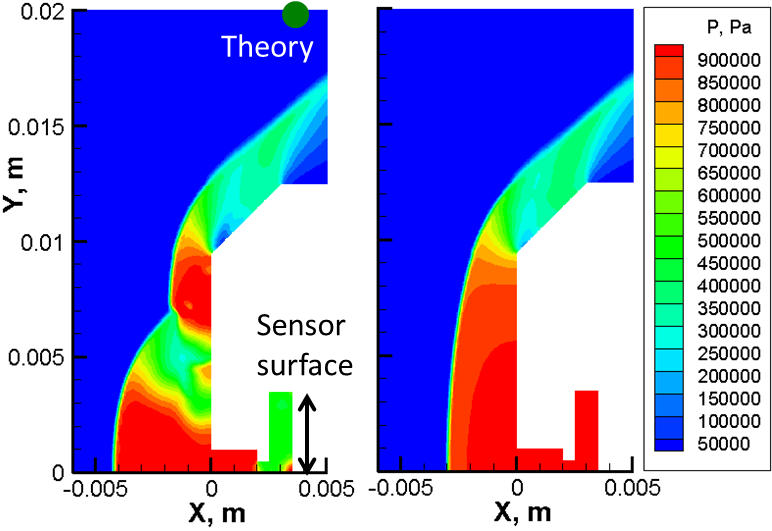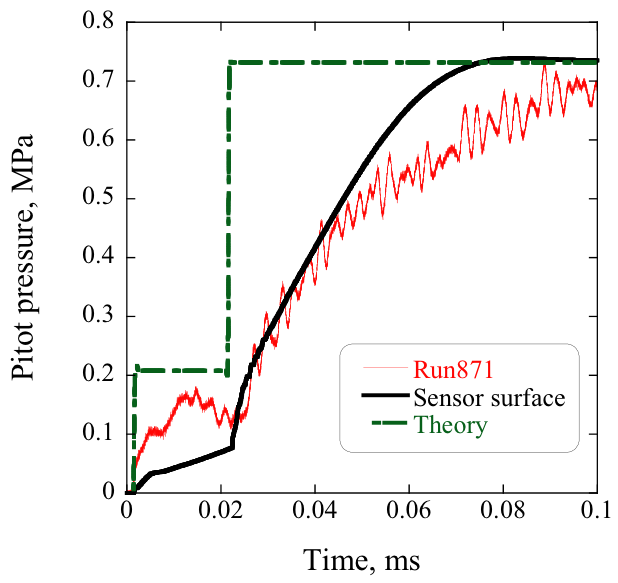Prediction of aerothermal environment around atmospheric entry vehicles with sophisticated numerical tools
JAXA Supercomputer System Annual Report April 2017-March 2018
Report Number: R17EA1402
Subject Category: Aeronautical Technology
- Responsible Representative: Shigeru Hamamoto, Aeronautical Technology Directorate, Aerodynamics Research Unit
- Contact Information: Takashi Ozawa ozawa.takashi@jaxa.jp
- Members: Adrien Lemal, Toshiyuki Suzuki, Takashi Ozawa, Toru Yamada, Yuuto Higuchi, Ryotaro Murakami
Abstract
In this study, we try to enhance physical models for high temperature gas and numerical simulation method to accurately predict heating and aerodynamic characteristics at hypersonic atmospheric entry. We aim to develop high fidelity simulation tool by demonstrating improvement of prediction accuracy by comparing experimental data and simulation results with the newly proposed model and method.
Reference URL
N/A
Reasons for using JSS2
In order to evaluate uncertainties in nonequilibrium thermochemical models and freestream conditions, supercomputer was used to perform a large number of CFD runs by changing physical models and flow conditions.
Achievements of the Year
In order to predict test flow conditions generated by expansion tube, measured shock velocity, static pressure and pitot pressure were compared with calculated results. As a result of comparison, It was found that shock velocity comparison shows agreement within 10%. Static pressure comparison showed reasonable agreement. Pitot pressure comparison showed overestimation by calculation. On the view point of overestimation of pitot pressure, possibility of 10 times higher forward rate constant of CO2 dissociation reaction with short holding time is highlighted. With respect to contact surface rise delay, direct simulation of pitot tube with sensor cover was conducted. As a result of simulation, possibility that sensor cover causes surface rise delay was presented. In our future work, in order to validate this simulated result, test flow temperature and CO2 number density will be measured by absorption method with a use of continuous light source.
Publications
■ Presentations
1) Yamada, T., Lemal, A., Matsuyama, S., Nomura, S., Takayanagi, H., Fujita, K., Matsui, M., “Numerical Analysis of Flowfield around Pitot Tube in an Expansion Tube,” 35th Aerospace Numerical Simulation Symposium, National Olympic Memorial Youth Center(Sibuya, Tokyo), Jul. 29-30, 2017.
2) Yamada, T., Higuchi, Y., Lemal, A., Matsuyama, S., Nomura, S., Takayanagi, H., Fujita, K., Matsui, M., “Determination of Test Flow Conditions Simulating Mars Entry Environment in an Expansion Tube,” 61th Symposium on Space Sciences and Technology, Toki-messe (Niigata, Niigata), Oct. 25-27, 2017.
3) Yamada, T., Higuchi, Y., Lemal, A., Matsuyama, S., Nomura, S., Takayanagi, H., Fujita, K., Matsui, M., “Prediction of thermochemical conditions of CO2 Expansion Tube Flow,” H29 Symposium on Flight Mechanics and Astrodynamics, ISAS (Sagamihara, Kanagawa), Dec. 7-8, 2017.
Usage of JSS2
Computational Information
- Process Parallelization Methods: MPI
- Thread Parallelization Methods: OpenMP
- Number of Processes: 16 – 52
- Elapsed Time per Case: 20.00 hours
Resources Used
Fraction of Usage in Total Resources*1(%): 0.07
Details
Please refer to System Configuration of JSS2 for the system configuration and major specifications of JSS2.
| System Name | Amount of Core Time(core x hours) | Fraction of Usage*2(%) |
|---|---|---|
| SORA-MA | 478,847.82 | 0.06 |
| SORA-PP | 5,479.16 | 0.07 |
| SORA-LM | 0.00 | 0.00 |
| SORA-TPP | 0.00 | 0.00 |
| File System Name | Storage Assigned(GiB) | Fraction of Usage*2(%) |
|---|---|---|
| /home | 514.98 | 0.36 |
| /data | 10,147.10 | 0.19 |
| /ltmp | 9,765.63 | 0.74 |
| Archiver Name | Storage Used(TiB) | Fraction of Usage*2(%) |
|---|---|---|
| J-SPACE | 0.00 | 0.00 |
*1: Fraction of Usage in Total Resources: Weighted average of three resource types (Computing, File System, and Archiver).
*2: Fraction of Usage:Percentage of usage relative to each resource used in one year.
JAXA Supercomputer System Annual Report April 2017-March 2018




